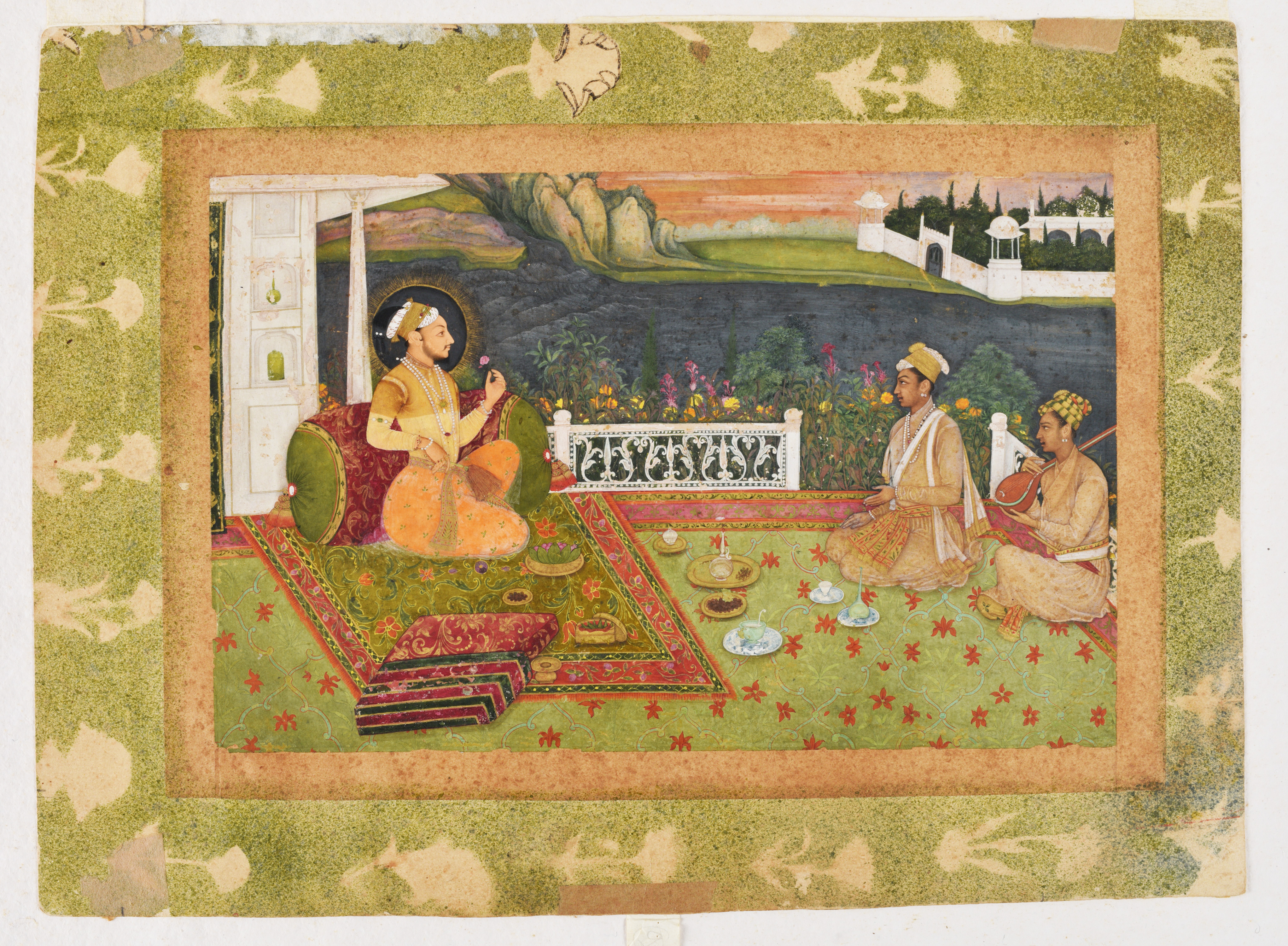Prince Bedar Bakht, Grandson of Aurangzeb and the Governor of Western Deccan Enjoying Music
Original Location: Golconda
Present Location: National Museum, New Delhi
Date: 1710 CE
Period: Early Modern
Material: Paper
Objects: Painting
Style: Deccan
Credits: National Museum, New Delhi
The artefact in consideration is a Deccan style painting. It can be traced back to 1710 CE and is at display in the National Museum, New Delhi.
Muhammad Bedar Bakht (1670-1707) was a Mughal prince, son of Muhammad Azam Shah and grandson of Mughal Emperor Aurangzeb. The relevance of the subject lies in the long drawn Mughal conquest of Deccan (1596-1687 AD), which became most prominent during Aurangzeb’s reign. He occupied Golkonda in 1687. The painting is interesting because of its posthumous date and the fact that he spent most of his life in Aurangabad, Malwa and Gujarat which renders his presence in Golkonda confusing. He reportedly died in the battle of Jajau (in present day Uttar Pradesh) in 1707. What complicates the matter further is the halo around his head, the symbol of divine illumination, which was the hallmark of Mughal emperors, not princes. Moreover, in his other portraits, he is shown without a halo. In a nutshell, the veracity of the painting is questionable as per basic reasoning.
The painting shows clearly marked facial features with eyes, eyebrows and beard intricately drawn. A noteworthy feature is the racial differentiation, the prince depicted as white while the governor and musician is shown as dark skinned. This must be the result of Deccan’s ethnic diversity. The Deccan nobility was divided between foreigners or afaqis/gharibs from Iran and Khurasan and the Deccani, divided between the Afghans and Habshis who belonged to Abyssinia and Erithrean coast of Africa. Even Malik Ambar, the famous Prime Minister of Ahmadnagar was of Abyssinian descent, sold as a slave in Baghdad to a merchant who brought him to Deccan. The painting portrays Bedar Bakht listening to a sitar being played by the musician which is interesting because his grandfather, Aurangzeb had banned music in 1668-9 CE in owing to the commandments of the Shari’a. While the ban was pronounced when he was in Delhi, the painting reveals that Deccan was not very much affected by it. Besides, the painting clearly depicts a clear status hierarchy between prince who takes up a bigger space both in bodily measurement and the painting dimension as a whole, in contrast with the governor and musician who are drawn as shorter and in lower plane. The prince is also wearing more colorful clothes with substantial jewelry while the musician and the governor drape a bland tunic with minimal jewelry.
Despite its ambiguous facticity, the artefact is a fine example of Deccani Miniature Painting which basically ranges from 16th to 19th century. The Deccani style is essentially an amalgamation of Persian, Turkish and indigenous tradition. The Bedar Bakht painting reveals the phase in which the localized element in the Deccani painting became dominant. Blue and green colors are used majorly in Persian paintings and red and yellow (light colors) in Indian traditions which therefore, shows a fusion of these two traditions. Geometrical symmetry is important to Deccani tradition. Painted on paper, this painting shows human figures, trees, shrubs, flowers, architectural structures, cushions and body parts, a measured placement creating balance. It also shows perspective of depth and distance which is central in Deccani miniatures leading to multidimensional effect. This is a Persian European influence. With this technique, the objects on the canvas are magnified against the natural background.
 Government of Indiaa
Government of Indiaa


 Recognizing the ongoing need to position itself for the digital future, Indian Culture is an initiative by the Ministry of Culture. A platform that hosts data of cultural relevance from various repositories and institutions all over India.
Recognizing the ongoing need to position itself for the digital future, Indian Culture is an initiative by the Ministry of Culture. A platform that hosts data of cultural relevance from various repositories and institutions all over India.
